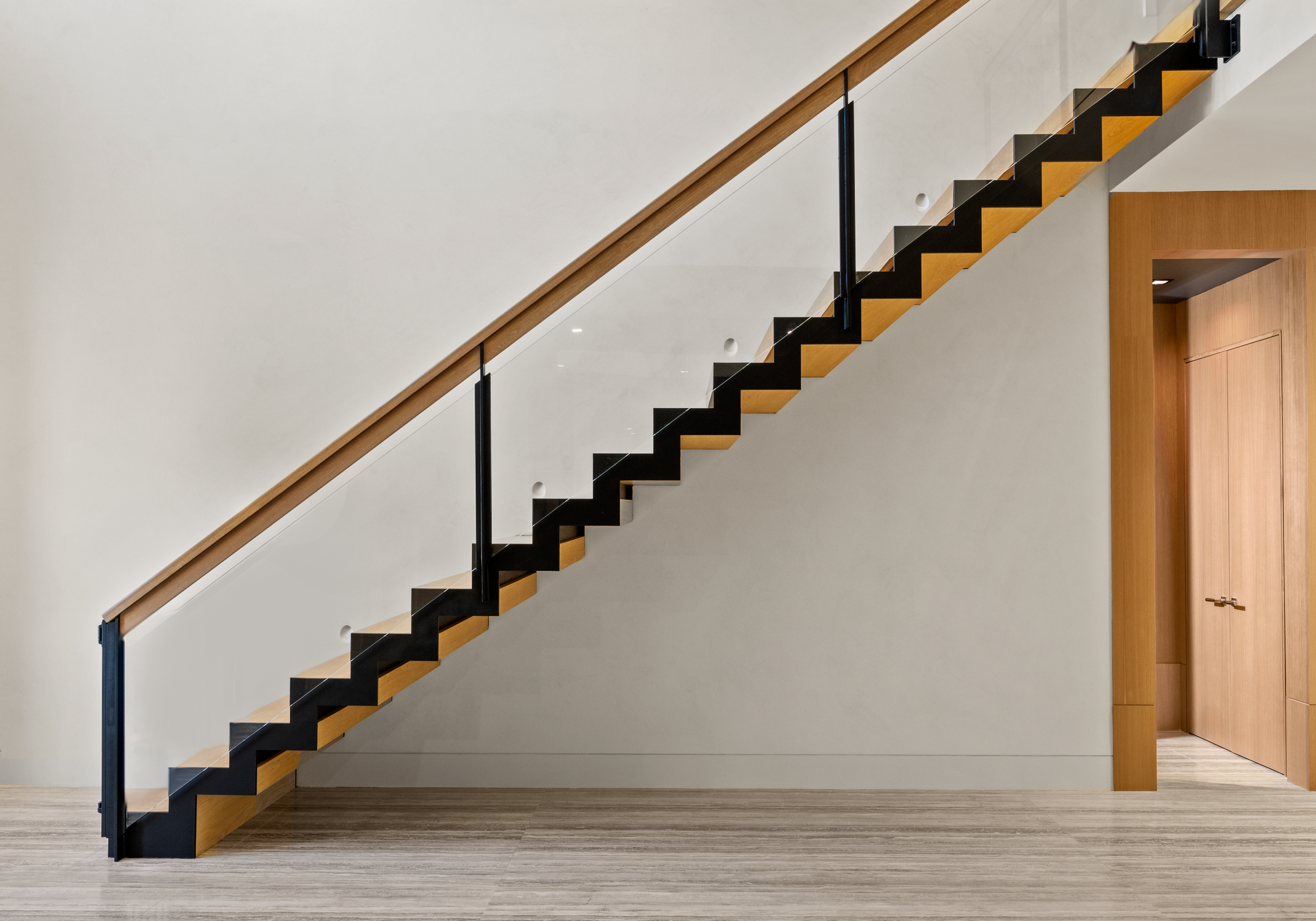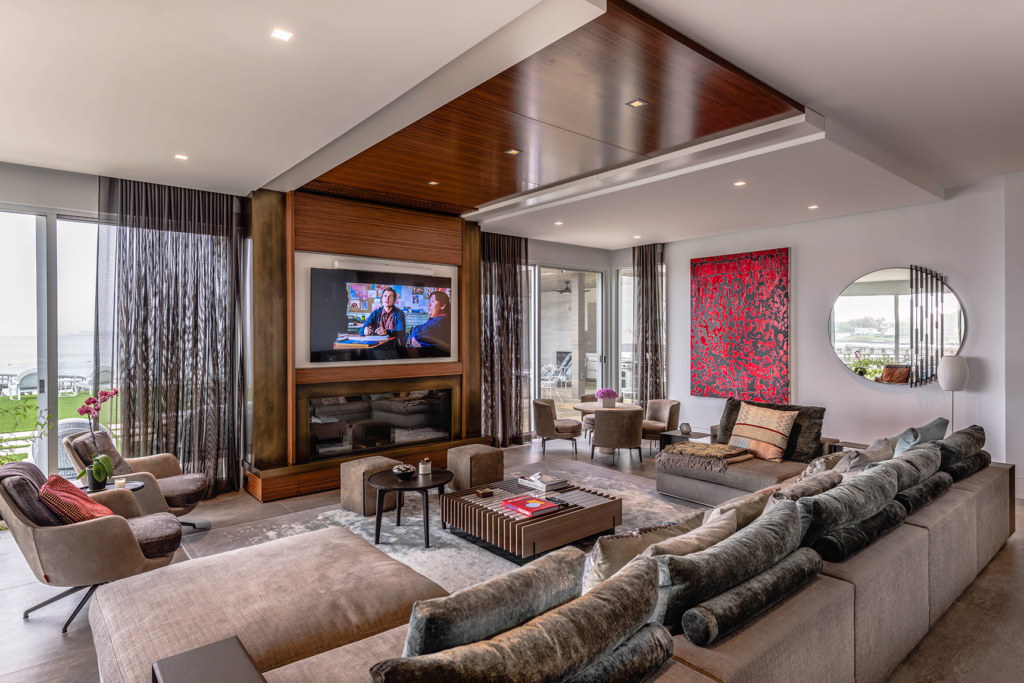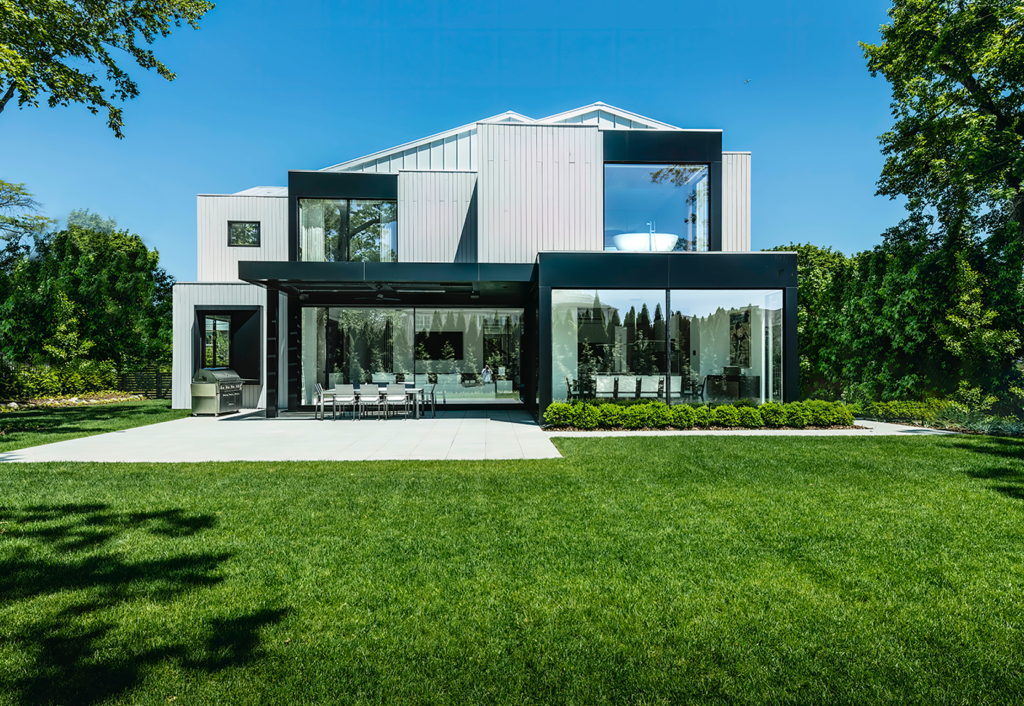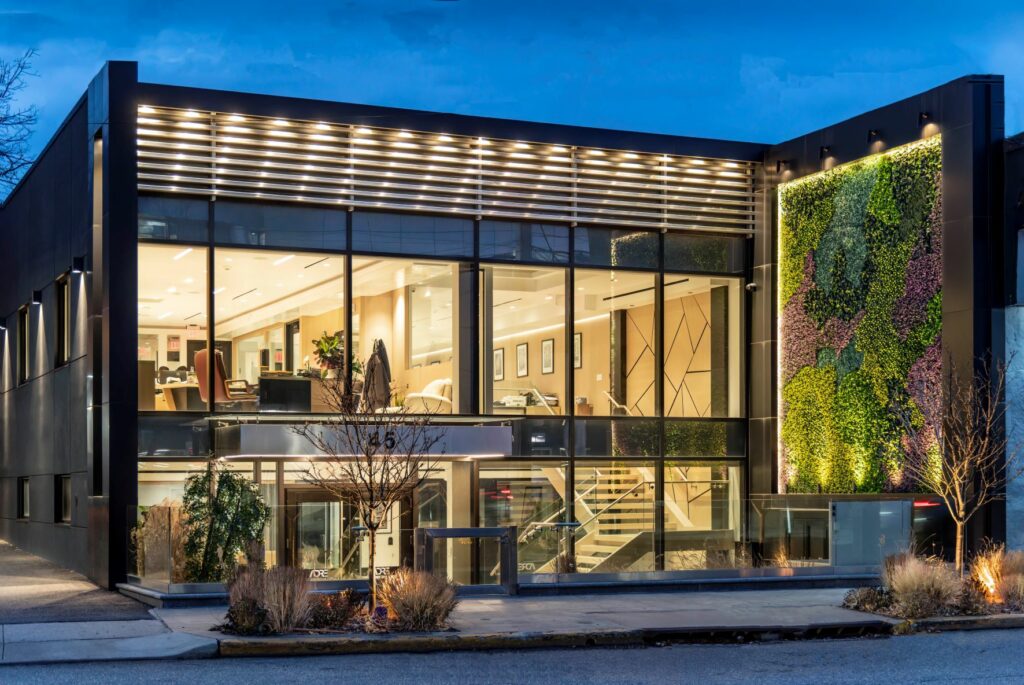
Minimalism In Design: Exploring Mojo Stumer’s Modern Minimalist Architecture
In the intricate world of architectural and interior design, minimalism in architecture stands out as a beacon of cleanliness, clarity, and purpose. This design philosophy, rooted in the belief that ‘less is more,’ has been embraced and redefined by Mojo Stumer over the years. Our project portfolio serves as a model in modern minimalist architecture, utilizing clean lines, functional spaces, subtle details, and thoughtful color palettes to achieve the perfect curation of minimalism in design to meet our client’s dreams and desires.
The Deep-Seated Principles of Minimalism In Design
At its philosophical core, minimalism in design is a reaction against excess. It’s a call to strip away the unnecessary, to pare down to the essentials, and to find beauty in simplicity. Creating an equally efficient and enjoyable space without excess is harder than one may imagine. These factors characterize the minimalist design ethos:
Clean Lines: These are not just straight lines; they’re a commitment to clarity. They forgo ornamentation, focusing instead on form and function, creating spaces that simultaneously feel open, uncluttered, and harmonious.
Functional Spaces: In minimalism in architecture, every element serves a purpose. Spaces are designed with intention, ensuring that they’re not just beautiful but also functional. It’s about creating environments that enhance the human experience rather than detract from it.
Subtle Details: While minimalism in design is characterized by simplicity, it doesn’t mean a lack of detail. Instead, the details are subtle, refined, and often understated. Whether it’s the precise alignment of fixtures, the meticulous choice of materials, or the nuanced play of textures, these details are carefully considered and executed.
Thoughtful Color Palette: Far from bland, a minimalist color palette is carefully curated. Neutral tones, often complemented by natural materials, allow the architectural and design elements to shine. It’s about creating a backdrop that amplifies rather than overshadows the design.
A Historical Look At Minimalism in Design
The roots of minimalism in design stretch back to the early 20th century, drawing inspiration from traditional Japanese design, which values simplicity and the beauty of empty space. The Bauhaus movement, with its emphasis on function over form, also played a pivotal role in shaping minimalist thought.
By the mid-20th century, minimal modern architecture emerged more prominently in Western architecture and art. Artists like Donald Judd and Agnes Martin and architects like Ludwig Mies van der Rohe and Tadao Ando championed the minimalist cause, each bringing their unique interpretation to the table.
Mojo Stumer’s Interpretation of Modern Minimalist Architecture
Mojo Stumer’s work is a testament to the timeless appeal of modern minimalist architecture. Rooted in minimalist principles, our projects carry a distinct signature—a blend of elegance and functionality that’s unmistakably Mojo Stumer.
KINGS POINT HOUSE:
Nestled in a serene background, this residential project is a shining example of minimalism in design. Expansive glass facades blur the lines between the interior and the exterior, allowing nature to become an integral part of the design. The use of natural materials, like wood and stone, grounds the house, while the open floor plan, punctuated by clean lines and neutral tones, creates a sense of boundless space. The Kings Point House encapsulates the epitome of refined living, offering an unparalleled sanctuary for those seeking a harmonious blend of contemporary minimalist architecture and tranquil serenity.

ENGLEWOOD CLIFFS HOUSE:
Perched on a picturesque lot, this modern minimalist architecture gem offers panoramic views of the beautiful lawn and surrounding trees. The design, while minimalist, is dynamic. Windows and rooms jut out, playing with form and function. The thoughtful color palette creates a calming ambiance, with each room designed to maximize light and space. The residence, strategically sited to maximize privacy, welcomes residents and guests with a captivating use of limestone, wood, black aluminum, and expansive windows throughout. It represents a perfect expression of contemporary minimalist architecture in the residential space.

ADRE HEADQUARTERS:
This commercial project showcases Mojo Stumer’s ability to translate the principles of minimalism in architecture to a corporate setting. The facade, a blend of glass and metal, exudes modernity. Inside, open workspaces, punctuated by minimalist furniture and art, foster collaboration while also providing spaces for reflection. The project serves as an example of how minimal modern architecture and a thorough design process can result in a building that not only meets the needs of its owners but also enhances the community as a whole.

GLEN HARBOR PENTHOUSE:
Rising above the urban sprawl, this penthouse is a sanctuary in the sky. The design emphasizes openness, with floor-to-ceiling windows offering unobstructed views. Working within the bounds of the fixed floor plan in the new construction condominium building, the design process first focused on optimizing elements of circulation, access, and visual sightlines, while minimizing any major modifications to wall or framing locations. The interiors, characterized by clean lines and functional spaces, are both luxurious and minimalist, a testament to Mojo Stumer’s exemplary dedication to minimalism in architecture.

The Evolution and Future of Minimalism in Design
As we move further into the 21st century, minimalism in design is evolving. The increasing emphasis on sustainability, the efficient use of resources, and the integration of technology means that minimalism is no longer just an aesthetic choice; it’s a practical one.
Moreover, as urban spaces become more congested, the allure of open, uncluttered spaces grows. Minimalism, with its emphasis on functionality and simplicity, offers a respite, a chance to breathe. It’s a design philosophy that’s perfectly poised to shape the future, offering solutions that are not just beautiful, but also sustainable and human-centric. Mojo Stumer is committed to staying at the forefront of minimalism in architecture, by constantly reinventing what it means to be truly minimal and sustainable simultaneously.
Minimalism In Architecture and Interior Design
Minimalism, as interpreted by Mojo Stumer, is more than just a design choice; it’s a statement, a reflection of a deeper understanding of space, function, and beauty. Their projects, characterized by clean lines, functional spaces, and a restrained color palette, are a testament to the enduring appeal of modern minimalist architecture. With each new project, we continue to explore how contemporary minimalist architecture can enhance both form and function.
If you’re inspired by the elegance and simplicity of minimalist design, don’t just admire it from afar. Experience it. Schedule a consultation with Mojo Stumer, and let our team of talented architects and interior designers transform your residential or commercial space into a minimalist masterpiece.
